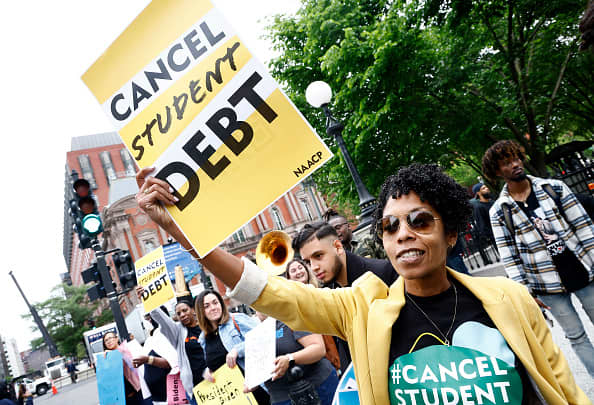The pause on federal student loan repayments in place since the start of the coronavirus pandemic is about to end.
Interest that had stopped accruing on loans resumed again on Friday, Sept. 1. Monthly bills will start up again in October.
Meanwhile, borrowers have been enrolling in the Biden administration's new repayment plan, called SAVE. The goal is to make payments more affordable so that students don’t leave school struggling with debt.
Approximately 43.4 million people had received student loans as of June for a total of about $1.63 trillion in outstanding loans, according to the U.S. Department of Education. That’s about 600,000 more loan recipients and $17 billion more in loans since last year.
Get a weekly recap of the latest San Francisco Bay Area housing news. Sign up for NBC Bay Area’s Housing Deconstructed newsletter.
If you’re one of them, here’s what you need to know.
When Do Student Loan Payments Resume?
The student loan pause took effect in March 2020 as an emergency response to the coronavirus pandemic. Bills will go out once again in October and according to CNBC, you can expect a few changes.
You might have a different server for your loan. That's because some of the servers stopped handling student loans during the pandemic.
And for a year, borrowers who miss payments will not go into default, nor will they be reported to credit reporting agencies.
Which Loans Will Accrue Interest?
Not only were loan payments suspended during the pandemic but interest accrual was too. That waiver on interest cost the federal government about $5 billion a month, according to CNBC.
Now both will restart.
The federal loans are often called Stafford Loans.
Anyone with a Direct Unsubsidized Loan, which is not based on financial need and which is available to undergraduate and graduate students, will again need to make interest payments.
But a subsidized Stafford Loan is available to undergraduate students who have a financial need. Those loans remain interest-free while a student is in school and for six months afterward.
What is the SAVE Plan?
The Biden administration’s SAVE Plan will cut monthly payments for millions of borrowers in half, the Education Department says. Payments will be based on income and the size of a borrower's family.
The plan, Saving on a Valuable Education, is available to undergraduate and graduate students with federal loans. Those with undergraduate debt will pay only 5% of their discretionary income. The new rate is down from 10% under the previous Revised Pay As You Earn Repayment Plan or REPAYE and will be available in July 2024.
Those with debt from both undergraduate and graduate studies will pay an amount in between.
Also changing is the amount of income exempted. That will rise to 225% of the poverty line.
Single borrowers who make less than $32,800 will not need to make payments. The same will be true for a family of four making less than $67,500.
You could be eligible for a temporary forbearance — another pause of your payments — if your student loan servicer cannot process your application in time.




